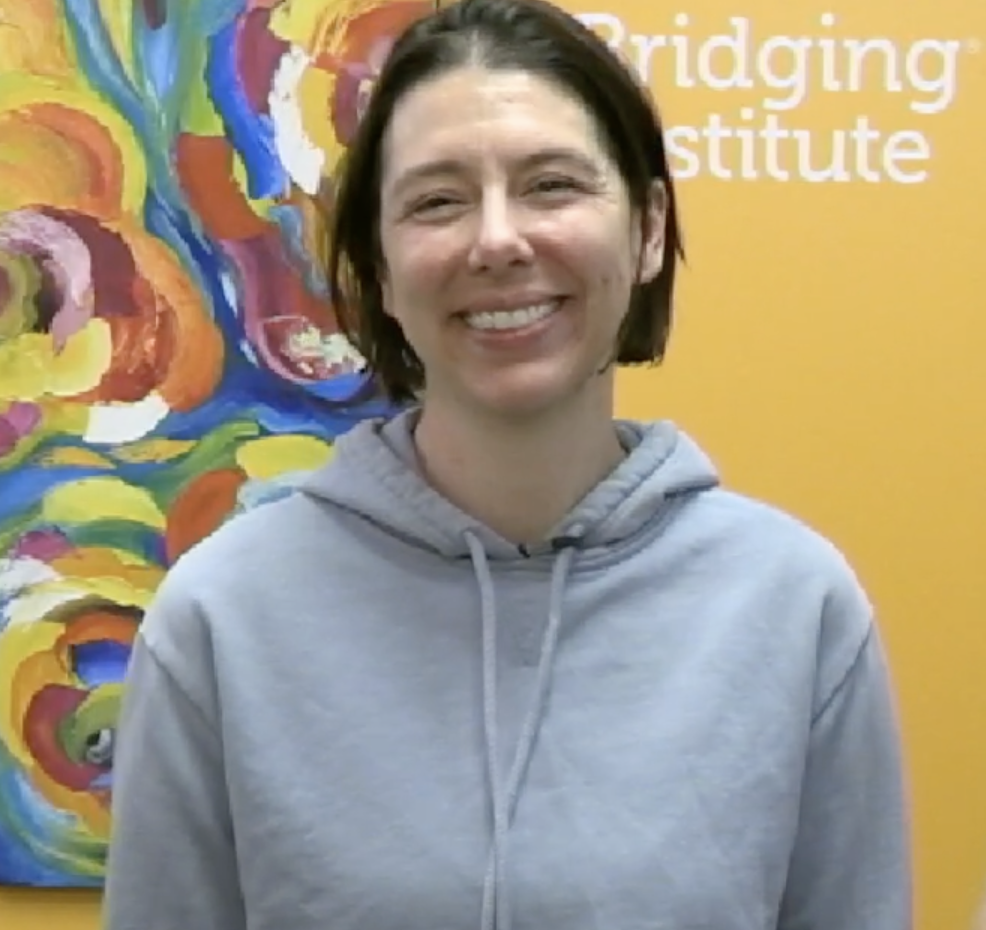When Your Body Has It’s Own Story to Tell …
Your body holds the story of your life — whether you remember it or not. Some common examples include:
- Tightness in the hip from a long-forgotten medical procedure.
- A twist in the forearm from a lingering sports injury.
- Instability in an ankle from a sprain during a late-night college mishap.
These disruptions often go unnoticed — or are written off as “just getting older.”
But they leave behind an impression that shapes how your muscles coordinate and the way your body moves.
At the Bridging® Institute, we see this all the time.
Through our systematic assessment of micromovements, the stories your body still holds begin to surface, even though your memory has filed them away long ago.
Movement Speaks — and It Did for Theresa
You may remember Theresa’s story from a few months ago. She had persistent postural asymmetry: her right shoulder sat significantly higher than her left, and no amount of stretching or chiropractic seemed to help.
As the founder of a growing non-profit organization, Work+Shelter, Theresa is conscious of her appearance, so her asymmetric shoulders have been a concern. Plus they were tight!
In her first session, we uncovered C-section scar tension pulling her core — and posture — out of alignment. You can also watch the video of this session here.
With Bridging support to the C-section scar area, her abdominal muscle coordination began to come back online. Then her shoulder and posture began to realign and relax.
But her story didn’t end there.
The Left Side Was ???
Theresa returned for a follow-up video session, expecting to continue the C-section related improvements. But something surprising showed up: her entire left-side core wasn’t moving — at all. Not even with breathing.
We were expecting right-side limitations from her C-section. But the left side??? This finding led to some deeper questioning.
When we see this kind of left-side rigidity in the chest, we often ask about:
- Past auto accidents (especially rear-end collisions)
- Significant respiratory illnesses (bronchitis, pneumonia)
- Severe viral or bacterial infections (COVID, Mono, etc.)
That’s when Theresa remembered something major.
A Forgotten Chapter: Typhoid While in New Delhi
Fifteen years ago, Theresa lived in New Delhi for five years while building her nonprofit which supports women in India. During her time there, she endured a brutal illness — typhoid fever — followed by recurring bronchitis from the city’s intense smog.
With prolonged high fever, dehydration, and systemic inflammation, her body had collapsed inward just to survive. From a movement perspective, this kind of trauma can shut down the deep coordination patterns in the core and ribcage — especially on the left. Why the left side?
The left upper chest area is especially vulnerable to ‘congestion’ after systemic illness such as typhoid. This lymphatic system’s primary drain is located there. A ‘clogged drain’ from unusual volume often results in restricted or tight movement of the left shoulder.
Fun Fact: The left shoulder’s lymphatic structures drain about ¾ of the entire body’s lymphatic flow — including from the abdomen and lower body.
The Shift Happened With Support
Using gentle Bridging support around her ribcage and under her shoulder, the muscles relaxed, realigned, and re-coordinated. Her breathing relaxed and expanded, and her shoulder tension melted away.
For the first time in years, her entire left side was moving again — and the change was immediate and visible. Her shoulders were even, and her head was moving more easily. You will also see a huge improvement to her balance.
The video is fascinating to see!
Theresa’s Insight: Sometimes You Need Support
Theresa reflected beautifully on the difference between Bridging and her years of Yoga practice:
“I spent a lot of years doing Yoga. There’s a sense of, ‘I’m doing the work—stretching, building strength.’ But what I’ve realized is … you can’t necessarily reboot yourself.
You can only do so much on your own. Sometimes you need additional support.”
That’s exactly what Bridging offers.
Get Back to Moving — and Living Fully
Sometimes the pain, stiffness, or imbalance you feel today is a ripple from something that happened long ago — an illness, injury, or surgery your body never let go of.
The Bridging Technique gives your body a chance to reset the muscle relationships and patterns that were disrupted — even if it’s been years.
What’s involved:
- Assessment of movement flow in your core and limbs
- Problem-solving to uncover hidden movement restrictions
- Gentle resets that restore how your muscles support breathing and balance
Results are fast. The process is gentle. Changes last.

